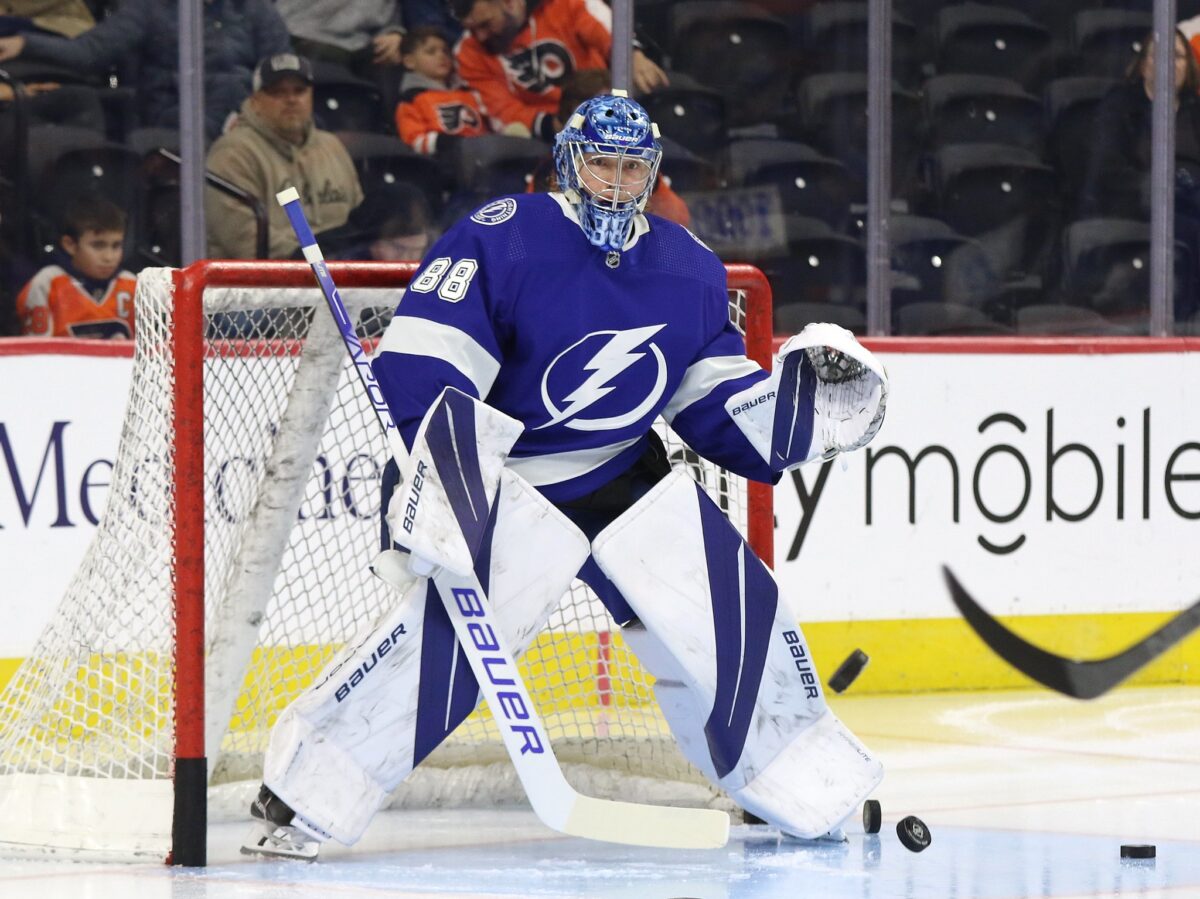As the Tampa Bay Lightning and Colorado Avalanche faced off in the 2022 Stanley Cup Final, it brought to mind one of the most important interactions between the franchises in their history. More than a decade ago, things looked very different for both Colorado and Tampa Bay, as neither team was objectively terrible (that would come in 2012-13), but they were both outside the playoffs and looking to make some changes at the 2012 trade deadline.
This led the Lightning to send fan-favorite forward Steve Downie to the Avalanche for defenseman Kyle Quincey. Had the player swap ended there, this would have been a pretty standard hockey trade, as Tampa Bay acquired a needed defenseman for their weak core, whereas Colorado brought in some toughness with Downie.

Of course, this is not where this trade ended. It turned out that the Detroit Red Wings were also interested in Quincey, but the Avalanche weren’t willing to trade a prime defensive asset within their own division. The Lightning, however, had no qualms in betraying Colorado’s trust, as they immediately flipped him to Detroit, returning a first-round pick at the 2012 draft and defenseman Sebastian Piche.
2012 3-Way Deadline Deal Was Far From a Blockbuster
Following this deadline deal, the two starting players went about making their mark on their new teams. First let’s discuss Downie, who never found a place in Colorado as he did in Tampa Bay. Injuries drastically reduced his ability, as he only started in 33 games with the Avalanche, posting three goals and 21 points along with 58 penalty minutes.
By all means, this was well below Downie’s expected output, but after a hot start to the 2013-14 season, he was traded by the Avalanche to the Philadelphia Flyers and continued playing well. In 51 games, he posted 3 goals and 17 points, while racking up 70 penalty minutes.
Related: Lightning Face Uphill Battle vs Avalanche in Stanley Cup Final
For Detroit, Quincey turned into a five-year starter on their blue line, putting together respectable playing numbers each season. He wasn’t a star by any means, but he averaged more than 19 minutes of ice time per game, and while he never got back to scoring as he did with Colorado, he still contributed 10 to 15 points each season.
Now, is this a player you would expect to trade a first-round pick for? No. But at least the Red Wings acquired a useful player in this trade, who went on to start 269 games. There’s value in that, especially for a team that was attempting to make deep postseason runs with an aging core.
Lightning Struck Gold with Red Wings’ Pick
Despite being a very talented team, the Red Wings didn’t make it out of Round 1 of the 2012 Playoffs, as they were eliminated by the Nashville Predators. This made the first-round pick acquired by the Lightning much higher in the draft than expected, coming in at 19th overall.
Heading into the draft, it was clear that the Lightning wanted to select a top-end defenseman and a top-end goaltending prospect with their two picks. With their first selection, which was tenth overall, they took defenseman Slater Koekkoek, who was seen as a high-risk, high-reward player. With the 19th overall pick, Tampa Bay decided it was time to claim the top goaltender, and they selected Andrei Vasilevskiy.
There will always be a debate about selecting a goaltender that high in the draft, as there are concerns over the long development cycles of goaltenders and the many risks involved with committing a top selection to such an unsure asset. However, by drafting Vasilevskiy, Tampa Bay changed the course of its franchise forever.

For more than 20 years, the Lightning struggled to find consistent goaltending, yet once Vasilevskiy took over as the starter, he never looked back. He has been a franchise-defining backstop to a championship-caliber team, and his heroics in net throughout the Lightning’s dominant runs to three-straight Stanley Cup Finals are quickly becoming a thing of legend.
Lightning Betrayed the Avalanche to Build a Champion
Following this 2012 trade, the Lightning and Avalanche have yet to make another trade together. This is odd for Tampa Bay, as they are a franchise that will make minor moves with anyone, even their cross-state rivals. While it’s always possible that there just has never been a deal the two teams agreed upon, it’s also possible that Colorado simply blacklisted the Bolts for betraying them in this deal, and even a decade later this history has yet to be forgotten.
While you can rightfully blame the Lightning for stabbing the Avalanche in the back, all they did was maximize their assets in order to build the best future possible. Had this pick not been used to select Vasilevskiy, this likely would have been nothing more than an interesting piece of trivia like so many deadline deals.
Related: 4 Lightning Goals That Defined the Eastern Conference Playoffs
However, since Tampa Bay managed to draft one of the best goaltenders in the world with this pick, the trade becomes a bit of a warning. Sure, you may not want to trade a player within your division, but there is no guarantee that someone else won’t. Hockey is a business after all, and there isn’t a general manager in the NHL who wouldn’t make the same deal as the Lightning back in 2012.
